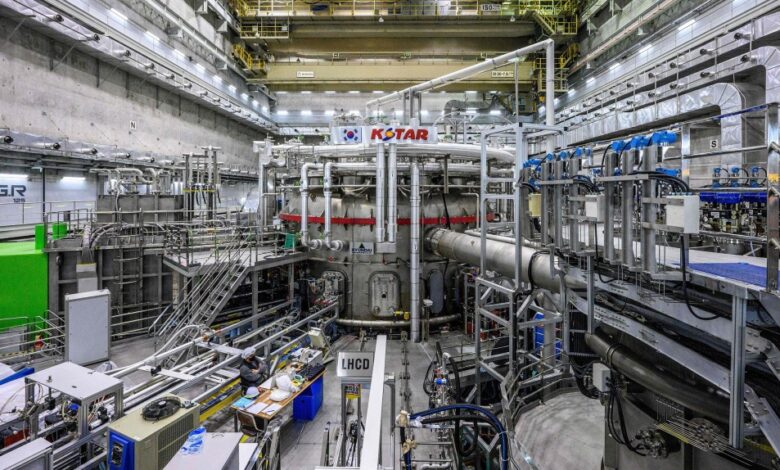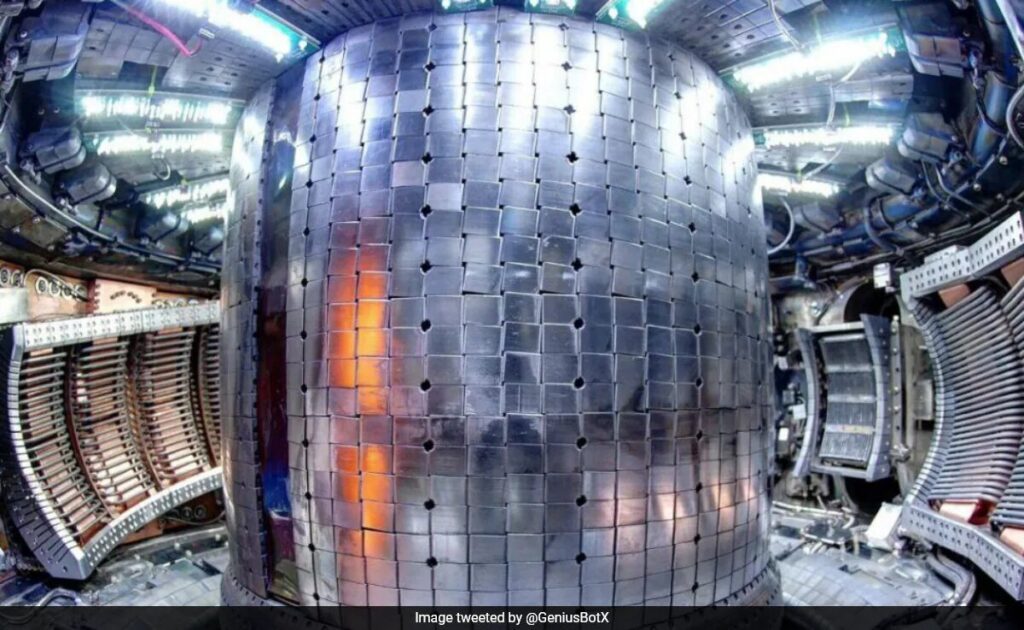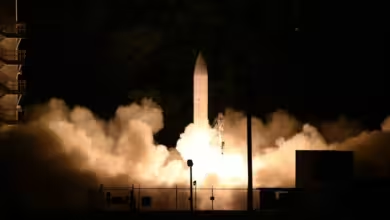‘Artificial sun’ from South Korea breaks world record with temperature 100 million degrees Celsius
KSTAR’s ultimate goal is to maintain plasma temperatures of 100 million degrees for a minimum of 300 seconds by 2026.

South Korean scientists have set a new world record of ‘Artificial sun’by maintaining a temperature of 100 million degrees Celsius for a nuclear fusion experiment, a temperature seven times hotter than the sun’s core.
The experiment was designed to mimic the reactions that fuel the sun and other stars. This was achieved by merging two atoms, resulting in the release of massive amounts of energy.
Nuclear fusion, often referred to as the ultimate solution for clean energy, offers the potential for unlimited energy production without the carbon emissions that contribute to global warming.
The process of achieving fusion energy involves the use of a doughnut-shaped reactor known as a tokamak. In this device, variants of hydrogen are heated to extreme temperatures to form a plasma.
Si-Woo Yoon, the director of the Korea Superconducting Tokamak Advanced Research (KSTAR) Centre at the Korean Institute of Fusion Energy (KFE), in an interview with CNN, emphasized the importance of high-density plasmas and high temperatures for sustained periods for the future of nuclear fusion reactors. He acknowledged the challenges in maintaining these high temperatures due to the unstable nature of high-temperature plasma.
KFE’s fusion research device, KSTAR, often referred to as the “artificial sun,” managed to maintain plasma and temperatures of 100 million degrees Celsius for 48 seconds during tests conducted between December 2023 and February 2024. This achievement surpassed the previous record of 30 seconds set in 2021.

The KFE scientists extended the duration by modifying the process, using tungsten instead of carbon in the “diverters” to remove impurities and heat generated by the fusion reaction.
KSTAR’s ultimate goal is to maintain plasma temperatures of 100 million degrees for a minimum of 300 seconds by 2026. According to Si-Woo Yoon, this is a “critical point” for scaling up fusion operations.
The experiments conducted by the South Korean scientists will contribute to the development of the International Thermonuclear Experimental Reactor (ITER) in southern France, the world’s largest tokamak.
Si-Woo Yoon believes that KSTAR’s work will significantly contribute to ensuring the predicted performance in ITER operation on time and expedite the commercialization of fusion energy.
More in the field of Artificial Sun
China also has an artificial Sun, known as the Experimental Advanced Superconducting Tokamak (EAST). In April 2023, EAST broke its own record by achieving a steady state high confinement plasma operation for 403 seconds, surpassing its previous record of 101 seconds set in 2017.
Plasma confinement, as defined by the US Department of Energy (DOE), is the containment of plasma by various forces under extreme conditions necessary for thermonuclear fusion reactions. These conditions naturally exist in stars, where the force of gravity sustains the plasma.
In laboratories, researchers use strong magnetic fields to confine plasma. A steady state high-confinement plasma operation is an operational regime in which plasma confinement is performed at high energy levels. During this process, the plasma reaches a state of high energy confinement and produces fusion power with very hot plasmas. This process occurs with a low consumption of magnetic flux, which measures the total magnetic field passing through a given area.
You might also be interested in – Rising global temperatures linked to 60% Increase in pre-term birth risks, warns study



